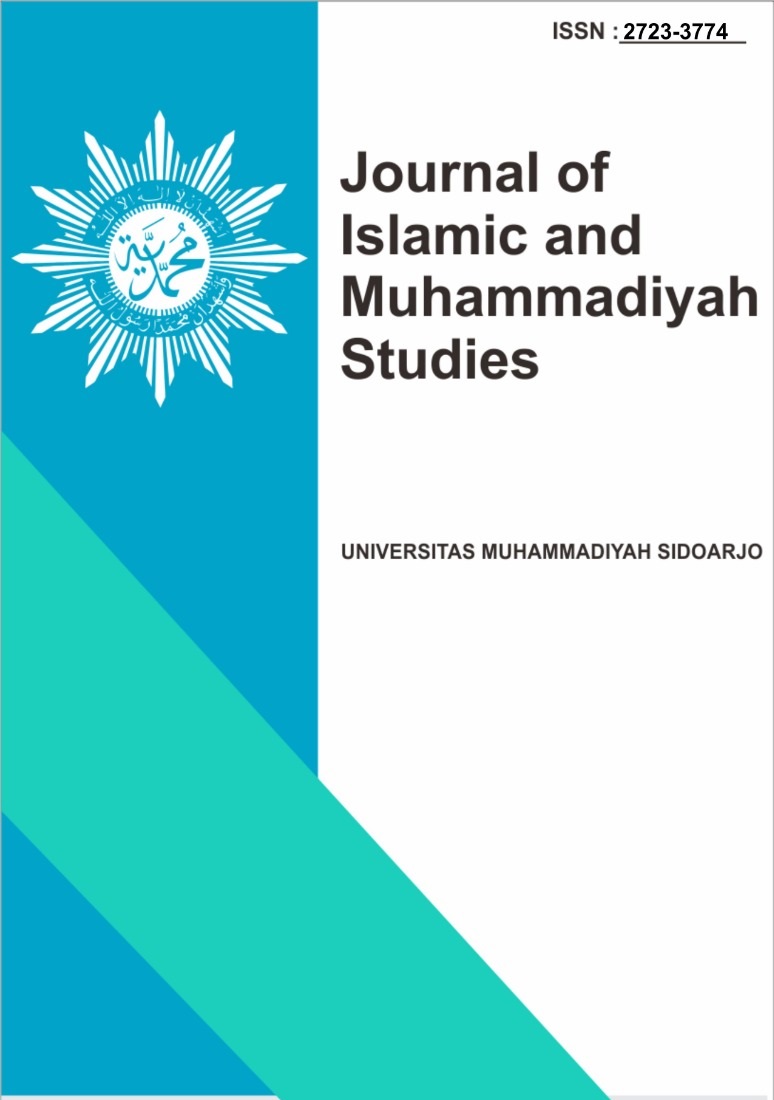The Maqasid Methodology in Contemporary Interpretation: An Applied Study
DOI:
https://doi.org/10.21070/jims.v7i1.1619Keywords:
Maqasid Methodology, Contemporary Exegesis, Islamic Legal Objectives, Imami Interpretation, Principles of Qur'anic InterpretationAbstract
The present research is aimed at considering the approach to the methodology of maqasid-based interpretation in modern exegesis based on models that use the objectives of Islamic law as a tool for the interpretation of the Qur'anic text. The research reveals the theoretical grounds of this approach, the motives for its development in modernity, and the calculation of its practical usage, paying primary attention to the works of Shi'a Imami exegetes while using certain works from other interpretive schools as support. The research uses descriptive, analytical, and critical means to appraise the interpretative texts and the degree of adherence to principles and guidelines of exegesis. The study concludes that the maqasid approach has contributed remarkably to the contemporary Qur'anic interpretation, but only insofar as it is used strictly within the boundaries of scholarly and legal criteria. The research suggests the further refinement of this methodology in order to reconcile Islamic law goals with textual limitations of the Qur'an.
Highlights:
-
Highlights the role of maqasid in modern Qur'anic interpretation.
-
Focuses on Imami exegetes with comparative analysis.
-
Emphasizes scholarly criteria for valid interpretive use.
Keywords: Maqasid Methodology, Contemporary Exegesis, Islamic Legal Objectives, Imami Interpretation, Principles of Qur'anic Interpretation
References
Abd Al-Al, H., & Ramadan, M. (2022). Awjuh al-Istifadah min al-Tafsir al-Maqasidi li al-Qur’an al-Karim fi al-Waqi’ al-Mu’asir. Majallat Qita’.
Abdurrahman, T. (2000). Su’al al-Akhlaq: Musahamah fi al-Naqd al-Akhlaqi li al-Hadatha al-Gharbiyah. Arab Cultural Center.
Abed, N., Berkani, B., & Nael, U. (2022). Ma’alim al-Tafsir al-Maqasidi ‘Inda al-Imam Ibn Atiyyah al-Andalusi min Khilal Tafsirihi al-Muharrar al-Wajiz. Majallat al-Shihab, 8(3), 123–146.
Al-Ansari, F. (2010). Majalis al-Qur’an: Mudarasat fi al-Tafsir al-Manhaji. Dar al-Salam for Publishing and Distribution.
Al-Azzawi, A. H. S. (2023). Al-Turath al-Islami wa al-Hadatha Inda Muhammad Abed al-Jabri. Journal of Babylon University for Humanities, 31(8), 220–242.
Al-Biqa’i, B. D. (1995). Nazm al-Durar fi Tanasub al-Ayat wa al-Suwar. Dar al-Kitab al-Arabi.
Al-Jabri, M. A. (2006). Fahm al-Qur’an al-Hakim: Al-Tafsir al-Wadih Hasab Tartib al-Nuzul. Center for Arab Unity Studies.
Al-Khoei, A. S. (1991). Al-Bayan fi Tafsir al-Qur’an. Institution for the Propagation of Shi’ism.
Al-Maraghi, A. M. (1969). Tafsir al-Maraghi. Dar Ihya’.
Al-Najjar, A. M. (2006). Maqasid al-Shari’ah bi-Ab’ad Jadidah. Dar al-Gharb al-Islami.
Al-Qaradawi, Y. (2000). Madkhal li Dirasat al-Shari’ah al-Islamiyah. Maktabat Wahba.
Al-Shatibi, I. M. L. (2003). Al-Muwafaqat fi Usul al-Shari’ah (A (E. Draz, Ed.). Dar al-Kutub al-Ilmiyah.
Ayi, S. (2022). Iktishafuh fi al-Fikr al-Islami al-Mu’asir ‘Inda al-Allamah Farid al-Ansari – Rahimahullah. Journal of Scientific Development for Studies and Research (JSD, 3(10), 109–126.
Baybars, A. A. M. (2017). Maqasid al-Shari’ah wa ‘Alaqatuha bi al-Tafsir al-Mawdu’i li al-Qur’an al-Karim. Journal of the Faculty of Sharia and Law in Tanta, 32.
Ibn Ashour, M. T. (1984). Al-Tahrir wa al-Tanwir. Tunisian Publishing House.
Ibn Ashour, M. T. (1997). Al-Tahrir wa al-Tanwir. Dar Sahnon for Publishing and Distribution.
Ibn Ashour, M. T. (2001a). Maqasid al-Shari’ah al-Islamiyah. Dar Sahnon.
Ibn Ashour, M. T. (2001b). Maqasid al-Shari’ah al-Islamiyah. Dar al-Salam.
Kroumi, F., Bouguelgoula, B., & Mu’attar, A. (2019). Al-Maqasid al-Juz’iyah ‘Inda al-Imam Muhammad al-Tahir Ibn Ashour (Ph.D. dissertation. Faculty of Islamic Studies, Ahmed Draia University of Adrar.
Raissouni, A. (1992). Nazariyat al-Maqasid ‘Inda al-Imam al-Shatibi. Dar al-Kalimah for Publishing and Distribution.
Rida, M. R. (1990). Tafsir al-Manar. The Egyptian General Book Organization.
Shaltut, M. (1993). Al-Islam Aqidatan wa Shari’atan. Dar al-Shorouk.
Downloads
Published
How to Cite
Issue
Section
License
Authors retain copyright and grant the journal right of first publication with the work simultaneously licensed under a Creative Commons Attribution 4.0 International License that allows others to share the work with an acknowledgement of the work's authorship and initial publication in this journal.






